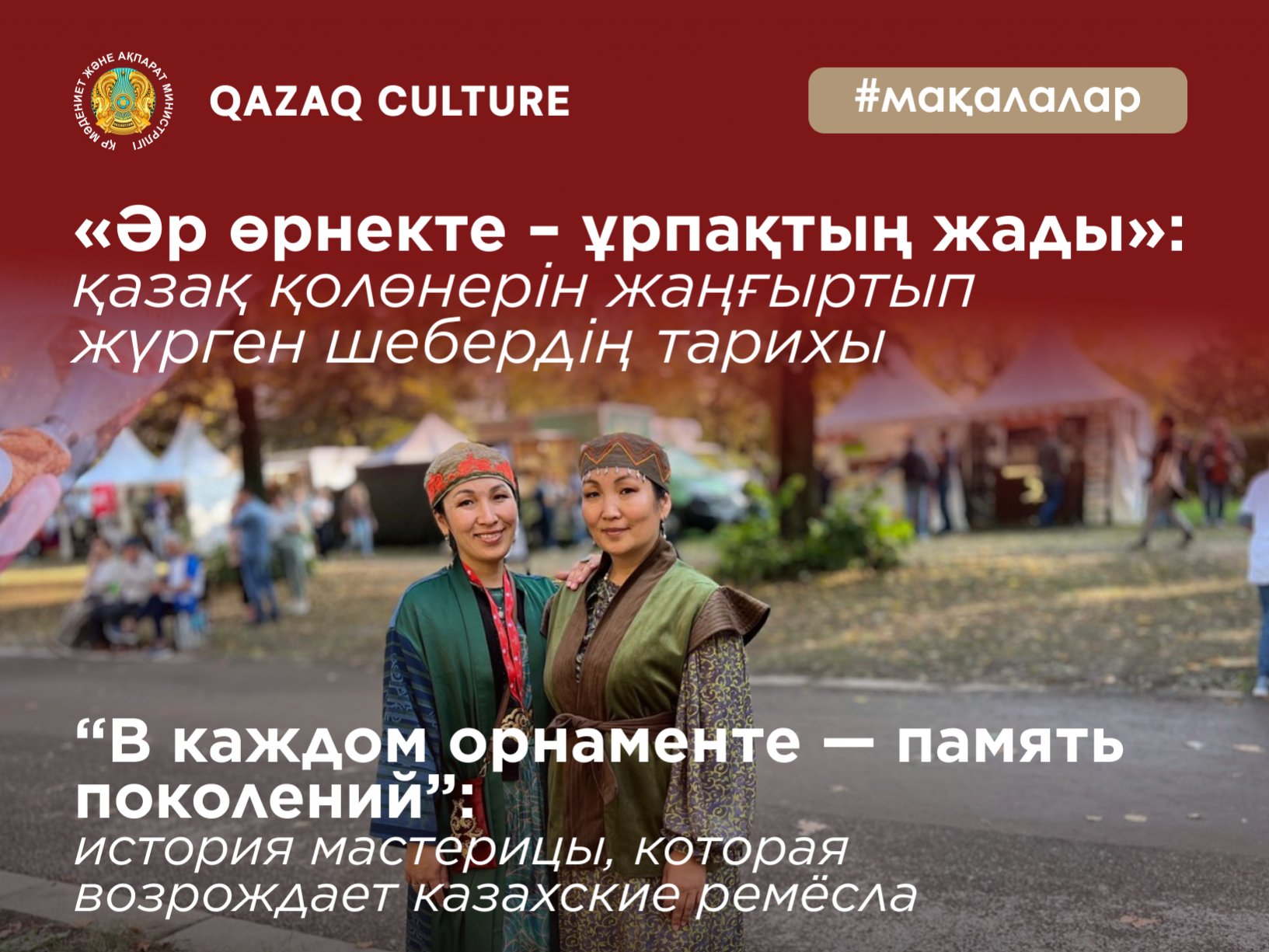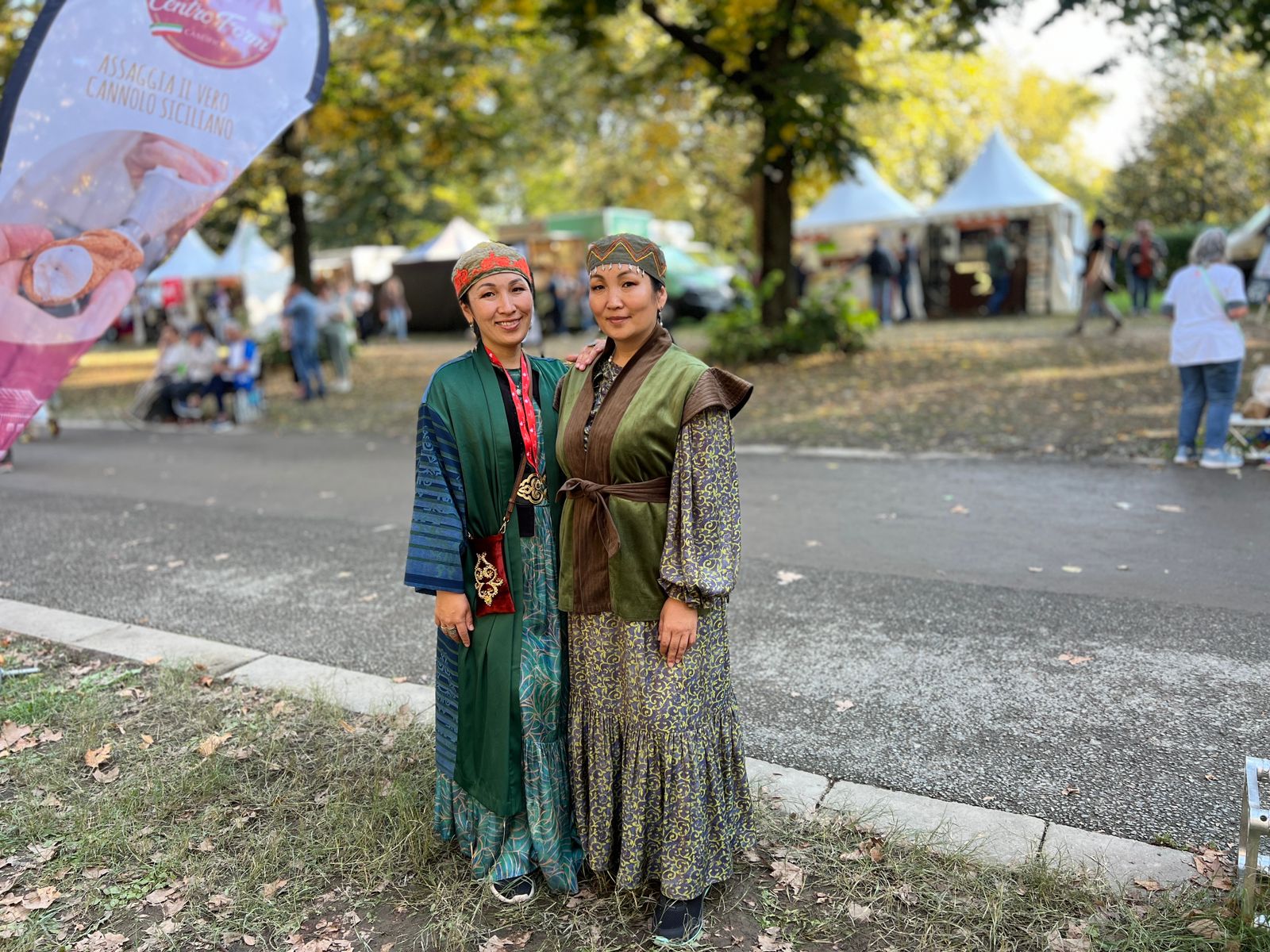“Every ornament contains the memory of generations”: the story of a craftswoman who is reviving Kazakh crafts

For her, ethnoculture is not a fashionable hobby, but a part of her DNA. She grew up among the stories of her elders about traditions, rituals, and national clothes, and she sewed her first product — a taqiya for a veteran of the Great Patriotic War — back in 2003. Today, Madina Kuandyk is the head of the Ult Kazynasy folk crafts center, a social innovator, and an entrepreneur. She does not just create unique things, but also turns crafts into a bridge between cultures, inviting, for example, American cowboys to Kazakh villages. We talked with the ethnodesigner and craftsman about her path, mission, and why felt is a philosophy of life.

How did your passion for ethnoculture begin?
— My passion began with childhood memories. I grew up among the stories of my elders about traditions, rituals, and national clothes. I saw all the customs at home - they were part of our life, passed down to me with my mother's milk and my father's blood. The real starting point was the realization that many crafts and customs are becoming a thing of the past, and young people no longer know their meaning. I knew that I wanted to preserve this wealth so that it would not become just a page in a textbook.
After finishing the 9th grade (there were no 10th or 11th grades in our village), I had already decided for sure that I would sew and do crafts. I am a fourth-generation craftsman: my mother, grandparents dedicated their lives to this business, and I continue their path. In 2003, I sewed and embroidered a taqiya for my Ata - a veteran of the Great Patriotic War.
Why did the revival of forgotten crafts become a mission for you?
- Because it is the soul of the people. Each product has a history, and each ornament - the memory of generations. If we stop creating them, we will lose part of our identity.
You are known for your unconventional projects. For example, you invited American cowboys to a Kazakh village. How did this idea come about?
- This is my personal, completely original idea. I wanted to show foreign guests not only beautiful pictures for the country's image, but also to let them feel the atmosphere of a real village. I thought: after all, we, like them, have a nomadic culture, our own heroes and symbols. When the cowboys came to the Nomad Games, I started looking for a place to immerse themselves in traditions. Several ethnic villages responded, but I chose the one I had already worked with and was confident in the quality. We arranged for the guests to fully immerse themselves in Kazakh customs. They were delighted with the cuisine, surprised at how much our cultures have in common, and very warmly welcomed this experience.
And how did the foreigners react to their acquaintance with our culture?
- They were left with a feeling of admiration and respect. They noted the sincere hospitality, generosity, beauty of rituals, taste of food and depth of meaning in simple, at first glance, things. Many left with the desire to return and bring friends or colleagues here.
What types of crafts, in your opinion, are in the greatest danger today?
- Fine types of handicrafts: traditional embroidery, weaving, ancient techniques of leather and felt processing. These skills were passed down from generation to generation, but now it is increasingly rare to find craftsmen willing to teach young people.
What is unique about felt?
- I like working with it.
Kazakh felt is unique not only for its strength and warmth, but also for its symbolism. Each pattern, each color carries meaning. Through my works, I want to show that felt is not just a material, but a whole philosophy of life, reflecting respect for nature, work and traditions.
How do you combine tradition with modernity in your works?
— I preserve the cut of the product, the key elements of the costume — patterns, styles, color combinations — but adapt them to a modern style and comfort. This is how shapans with national patterns, felt paintings, accessories that fit organically into everyday wardrobe appear.
What difficulties do you face in promoting ethnic culture?
— The main difficulty is competition with fast, mass trends and the lack of systemic support. Crafts require time, patience and deep immersion, and the modern pace of life often interferes with this. Another problem is goods from China, which some sell under the guise of handmade. This devalues the work of real masters, misleads people and deprives them of the opportunity to touch the authentic culture.
It is important for me that culture is not a memory, but the living breath of the people.